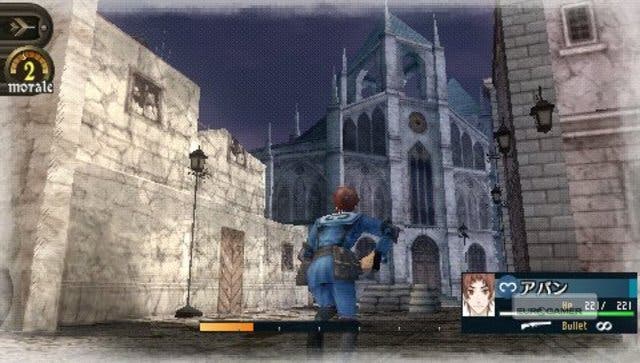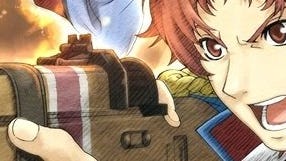Valkyria Chronicles II
Sociopolitics, tanks, strategic deployment and, er, homework.
Japan's not short of games that have seen far greater success on portable systems than they ever did on under-telly gameboxes, but Valkyria Chronicles seems a strange choice for downsizing. It's remembered for its beautiful sketchbook-style graphics and hour-long strategic battles - two things that have had to be scaled down to fit the PSP. Thankfully everything else that made it interesting is present and correct. This is still a game where your gay engineer will enjoy a stats boost if you make sure she's deployed near female squad-mates, or your racist scout won't fight with Darcsen soldiers. It's still a complex, politically engaging storyline framed in an innovative semi-real-time battle system, with likeable, developed characters. Superb!
Valkyria Chronicles II is part Japanese high-school drama, part war story. The main character is a 17-year-old called Avan Hardence, a student at a European military academy. It's set in 1937, two years after the original, and familiar racial tensions have stirred up a civil war in Gallia. The insurgents want to run an ethnic cleansing campaign to rid Gallia of people of Darcsen descent. This being two years after a world war, though, the regular army is depleted, leading wide-eyed cadets to be deployed on the front lines.
It's an odd juxtaposition - whilst the war gains momentum in the background, the little band of main characters is more concerned with the day-to-day drama of high school. It's a bit weird pressing X through screens and screens of Political Happenings and then being suddenly dropped into an adorably awkward conversation between Avan and one of his female classmates. According to Shinji Motoyama, the game's producer, it's an intentional contrast.

"Everyone goes to elementary, middle and high school - that's very familiar to us," he says. "It's set in a military academy, but still we wanted that element of familiarity so that the setting resonates with players. It's important to the storyline that you're an everyday civilian; you're just a student in a military academy, but all of a sudden you're thrown into war. We wanted the familiarity of everyday school life, and then in contrast the unfamiliarity of war - of being thrown into extraordinary life."
It certainly feels familiar once you're thrown into an actual battle. The Blitz system, remarkably, remains exactly the same as it was on the PS3, if less impressive visually. It's turn-based, but within your turn you move each of your units and fire at enemies in real-time. The blend of third-person action and top-down strategy feels as seamless and refreshing as it ever did. The maps are smaller and more compact than they were on the PS3, but there's an even greater choice of units and weaponry to populate them with.




